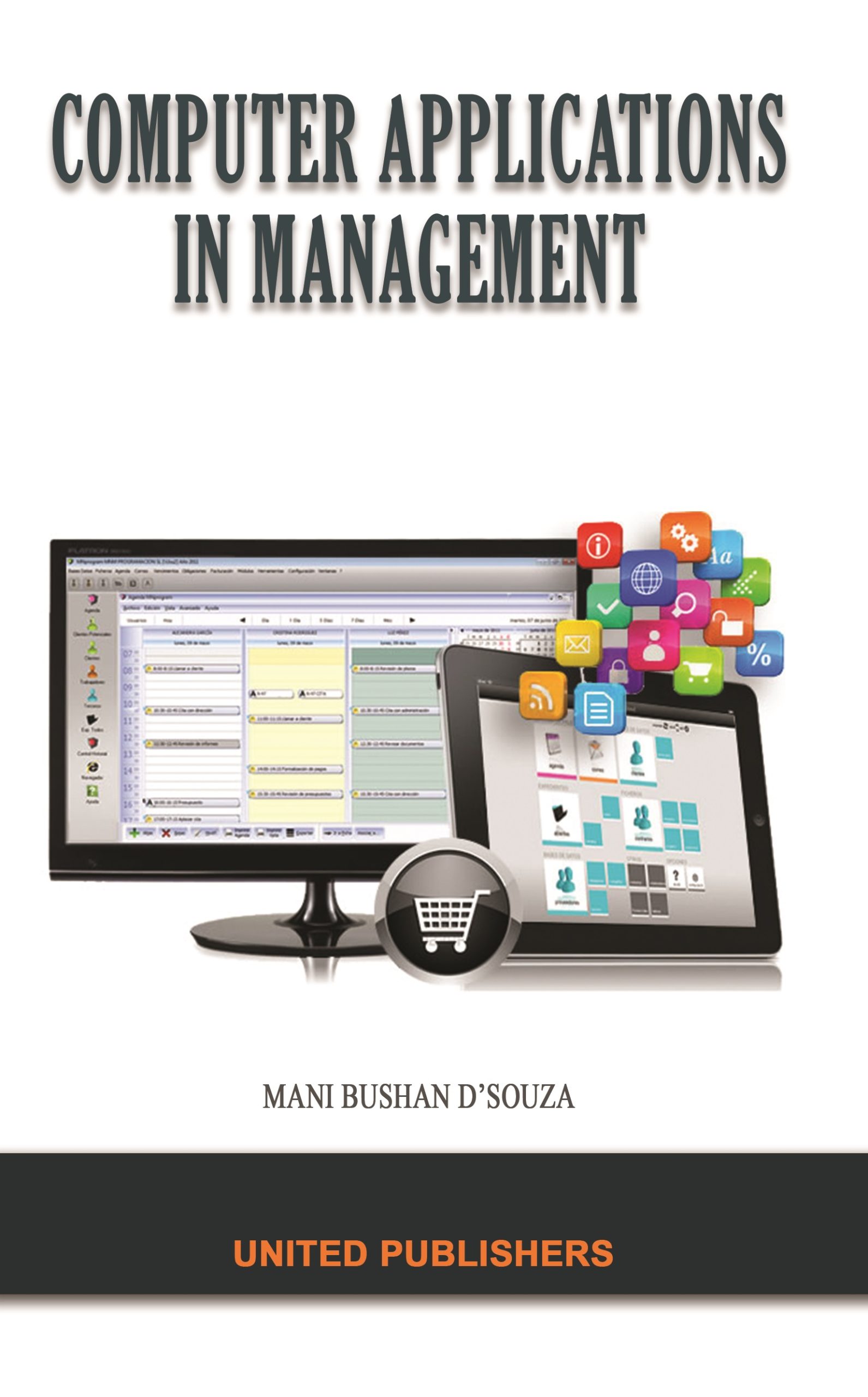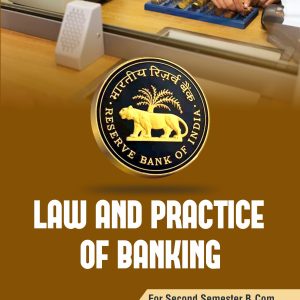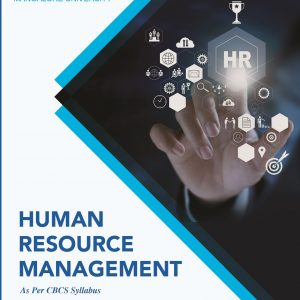Computer Applications in Management – Mani Bhushan D’souza
₹160.00
View Sample
Syllabus
Unit 1 : Introduction to computer– Types of computer: Based on their Construction and Working, Based on Applications, Based on Size, Speed and Capability- Characteristics of a computer- Components of computer with block diagram: Input Unit, Memory Unit, Central Processing Unit (CPU), Arithmetic Logic Unit (ALU), Output unit- Computer software and its classification: A) System Software 1. System Control Software; Operating System-Introduction and definition of Operating System-Function of operating system. 2. System Support Software and 3. System Development Software. B) Application software: Open-ended Software (General-purpose software), Application Specific Software, User-specific Software- Accounting Packages- Introduction to Tally-uses of Tally
Unit 2 : Introduction to computer networking-uses-Advantages of computer networks-Types of networks: LAN(Local Area Network), WAN(Wide Area Network), MAN(Metropolitan Area Network)-Network topology: Meaning of network
topology-Types of network topologies: Bus Topology, Star Topology, Ring Topology, Mesh Topology-Introduction to
Internet-Services of Internet: E-mail, Bulletin Boards, Usenet and Newsgroups, FTP(File Transfer Protocol), Telnet or Remote Login, Chat- Introduction to Database and Database Management System(DBMS)-Concept of Database and
Database Management System – Advantages or Facilities of DBMS- Database Models: Relational Model, Hierarchical
Model and Network Model.
Unit 3 : Introduction to Management Information Systems – Concept of information – Definition of information -Concept of MIS – Definition of MIS – Objectives of MIS – Characteristics of MIS – Need for MIS – Benefits of MIS – Limitations of MIS. Functions of MIS: Collect data, Store and process data and Present information to managers. The role of MIS – Importance of MIS – Components of information system: Hardware, Programs, Data, Procedures and People. Structure of information system – MIS organization: Top management or strategic level, Middle management or tactical level and supervising management or operational level. Framework for information systems: Strategic Planning,
Managerial Control and Operational Control – Critical success factors of MIS implementation.
Unit 4 : MIS as -a communication process – MIS planning: Determination of the users needs in specific terms,
Identification of inputs and human machine interface, Determination of scope of the system, Budgets, Scheduling. Establishing an MIS – Process of establishing an MIS: (planning, designing, implementing and improving the MIS). Data and Information- Concept of data – Data v/s Information – Concept of data processing – Nature of information – Manager
and information – Characteristics of information: Quality, Timeliness, Completeness and Relevance. Sources of
information: Internal and External. MIS and decision making – Phases of decision making process: Intelligence, Design and Choice.
Unit 5 : Office Automation Systems – Concept of office – Traditional and Modern concept (Location and functional concept) – Definition of office – Functions of office – Primary or routine functions and auxiliary or administrative functions. Nature or characteristics of office. Concept of office automation – Model of office automation system – Advantages of office automation and Disadvantages of office automation. Virtual office – Concept of Virtual office – Advantages of virtual office – Disadvantages of virtual office – Measures for making virtual office effective – Office automation applications: Word processing, Desktop processing, Videotex, Document, Imaging, Electronic mail, Voice mail, Electronic calendaring, Audio and Video conferencing, Computer conferencing and Facsimile transmission – Role of office automation in problem solving.









Reviews
There are no reviews yet.